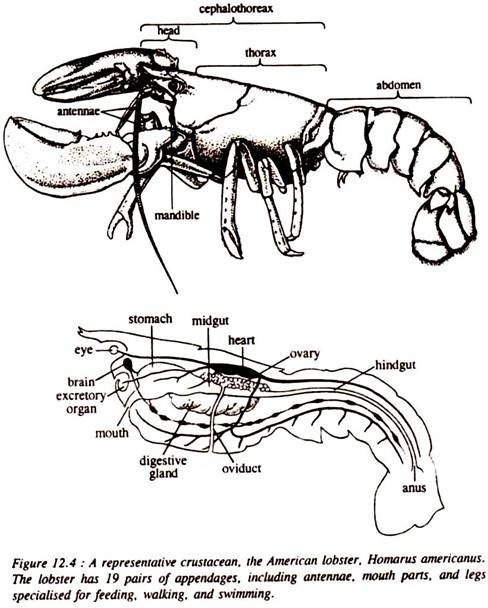Figure 12.4 shows the structure of a lobster, a representative crustacean. A crayfish, which is a freshwater form, differs morphologically from the lobster only in minor respects.
The lobster has 20 segments, the first 13 of which are united on the dorsal side in a combined head and thorax, or cephalothorax. A heavy shield, or carapace, arises from the head and covers the thorax. Carapaces are common among crustaceans.
The abdomen consists of six distinct segments. (To lobster eaters, the abdomen is the “tail,” but to biologists, the designation “tail” is usually reserved for areas of the body posterior to the anus.)
The various appendages have special functions. The antennae, of which there are two pairs, are sensory. The mandibles, or jaws, are used for crushing food; like all arthropod jaws, they move laterally, opening and closing from side to side like a pair of ice tongs rather than up and down like the jaws of vertebrates.
ADVERTISEMENTS:
The maxillae and the maxillipeds serve chiefly to collect food, mince it, and pass it on to the mouth. The laws are unequal in size in the full-grown lobster; the larger claw is used for defense and for crushing food, and the smaller claw, which has the sharper teeth, seizes and tears the prey.
The first two pairs of walking legs have small pincers, which can also seize prey. The last pair of walking legs also serves to clean the abdominal appendages. The flattened posterior appendages are used, like flippers, for swimming. The claws and abdomen are filled almost entirely with the large striated muscles many of us enjoy eating. These muscles are extremely powerful.
A lobster can snap its “tail” ventrally with enough force to shoot backward through the water, and a large lobster can shatter the shell of a clam or oyster with its crushing claw. Any one of its appendages can be regenerated over a series of molts if lost, and a lobster will often drop off (automize) a claw or leg that is held by a predator, in order to escape. Severely damaged legs are also automised, reducing blood loss.
The anterior and posterior regions of the digestive tract, the foregut and hindgut, are lined with cuticle. As a consequence, most of the food is absorbed through the mid-gut and through the cells of the large digestive gland, an appendage of the mid-gut.
Respiration is accomplished by the flow of water over 20 pairs of feathery gills attached to the bases of the legs. A pair of nephridia is located in the head; wastes extracted from the blood are collected into a bladder and excreted from a pore at the base of each of the second antennae. Fertilization is external; the sperm, which are deposited near the female gonopores, fertilize the eggs as they are laid, and the fertilised eggs cling by means of a sticky secretion to the swimmerets of the female until they hatch.
